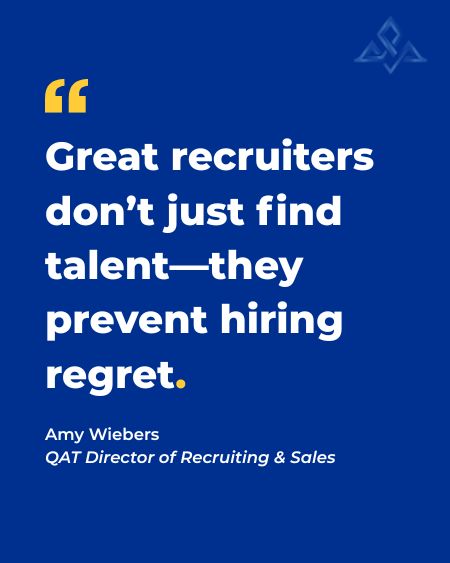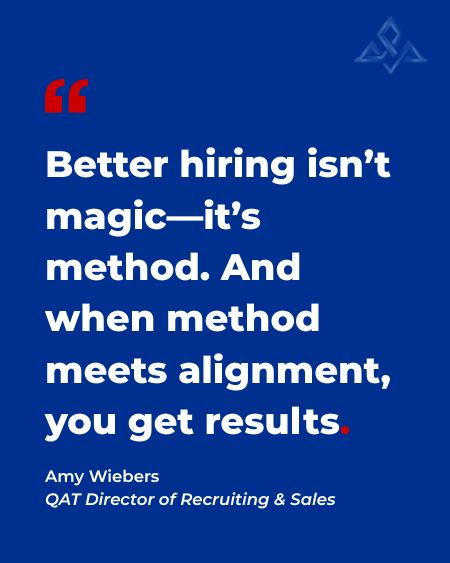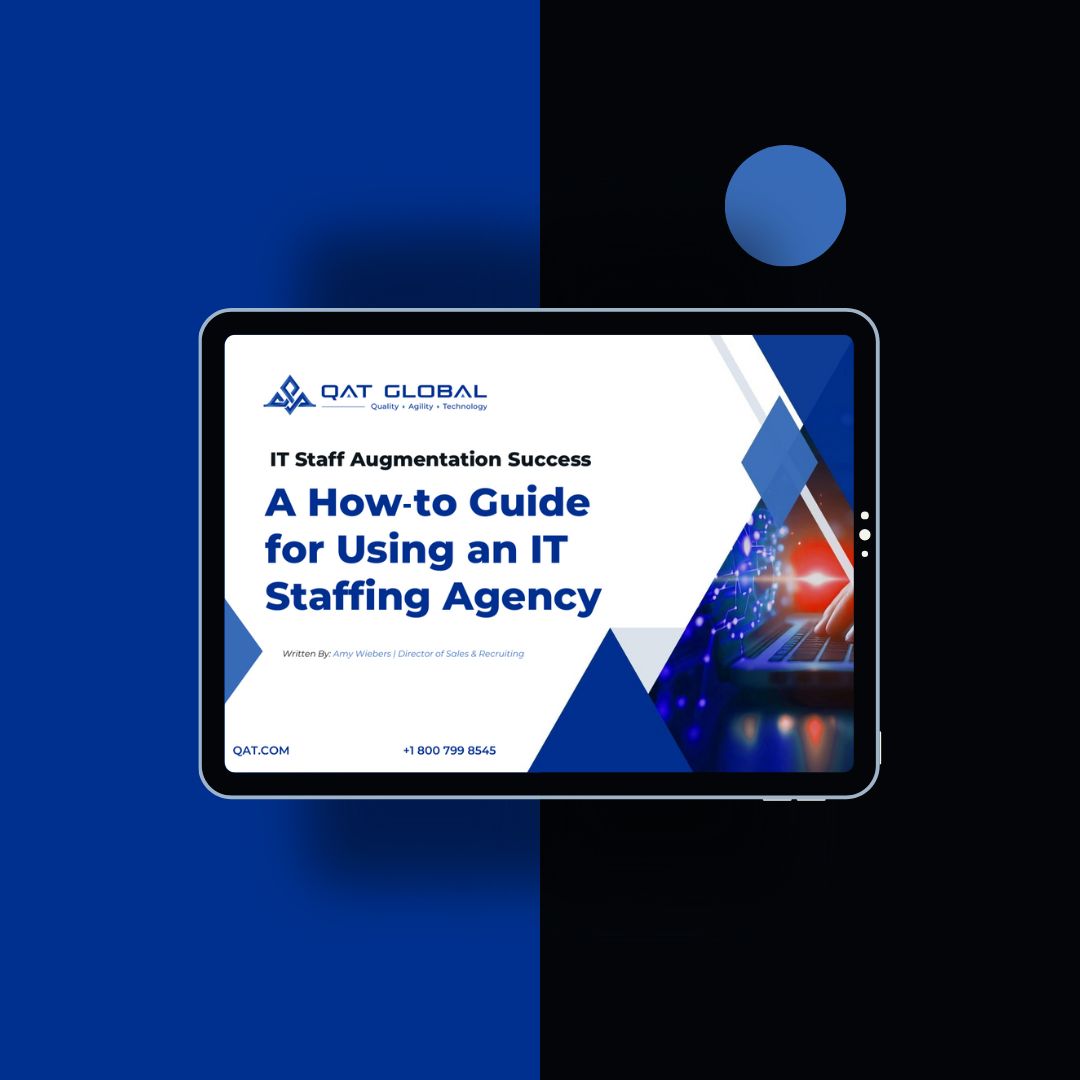Why IT Hiring Feels So Broken
Let’s face it—hiring great technical talent is harder than it should be. You invest time, budget, and trust. On paper, candidates look solid. In interviews, they say the right things. But then come the surprises: slow ramp-up, poor collaboration, misalignment with team culture, or worse— early attrition that sets your entire roadmap back months.
It’s not just frustrating—it’s expensive. And when the wrong hire gets past the gates, it doesn’t just affect a sprint. It impacts your people, your reputation, and your ability to deliver.
But here’s the thing: many hiring challenges don’t stem from a lack of qualified candidates. They stem from a lack of clarity and depth in the hiring process itself. The good news? There’s a better way.
What Is IT Staffing and Recruiting?
While often used interchangeably, IT staffing and recruiting are two distinct—but—related—functions:
- Recruiting is about sourcing, attracting, and screening candidates for open roles.
- Staffing is the broader function of deploying technical talent—whether permanent, contract, or project-based—based on business needs.
In other words, great recruiting is a vital component of effective IT staffing—but staffing goes further. It ensures that talent is not only found, but successfully deployed, integrated, and supported in a way that aligns with long-term business goals.
When coordinated well, recruiting and staffing ensure the right people are not only found, but placed in the right roles at the right time
The Strategic Role of IT Staffing
Today’s tech teams need more than a résumé match. They need:
- Fast access to in-demand skill sets.
- Flexibility to scale teams with project cycles.
- Team members who integrate quickly and contribute meaningfully.
- Reduced burden on internal hiring resources.
That’s what IT staffing enables when done well. It brings agility, speed, and alignment into the hiring process—especially when working across multiple roles or geographies.
Common Misconceptions About IT Recruiters
Let’s clear something up: not all IT recruiters are created equal. Here are some of the most common misconceptions that lead to frustration:
- “They just forward résumés I could find on LinkedIn.”
→ Strategic recruiters actively vet candidates for soft skills, problem-solving, and adaptability before you ever see their profile. - “They don’t understand the technical roles I need to fill.”
→ Great IT recruiters work closely with engineering leaders to deeply understand the tools, frameworks, and business objectives of each role. - “They slow down the hiring process.”
→ Actually, a structured recruiting partner speeds things up—by reducing unqualified interviews and avoiding mis-hires that stall projects.
If you’ve had a bad experience, don’t write off the whole model—invest in a recruiter or staffing partner who uses a multi-layered, consultative approach. These recruiting pitfalls are exactly what a quality IT staffing partner prevents – by owning the full hiring lifecycle.
Why the Right Recruiting Approach Powers Successful Staffing
There’s a difference between recruiters who forward a stack of résumés and those who deliver vetted, prepared, and aligned candidates. The best recruiters serve as advisors. They clarify role expectations, validate skills, and screen for fit—before candidates ever hit your inbox.
When recruiting is done strategically, it saves time, improves retention, and supports long-term team success. That’s worth investing in.

What Does a Modern IT Staffing Process Look Like?
Modern staffing isn’t about speed alone—it’s about structure and precision. A well-defined process helps reduce hiring friction and improve outcomes. Here’s a proven five-step framework used by top-performing teams:
This process starts with expert recruiting—and it becomes strategic IT staffing when followed through with onboarding, integration, and performance alignment.
What Is a Multi-Layered Screening Process? And Why It Works
A multi-layered screening process is an intentional, structured approach to candidate evaluation that goes beyond surface-level assessments. It asks not just, “Can they do the job?” but also, “Will they thrive in this role, with this team, in this environment?”
Most hiring managers focus too heavily on hard skills and technical knowledge alone. But technical prowess doesn’t guarantee long-term success. The best developers may be great coders, but if they can’t collaborate, handle pressure, or align with your company’s culture, projects suffer, and teams fracture.
A multi-layered screening process corrects that mistake by layering in behavioral evaluation, communication fit, and motivation, so you reduce risk and increase the likelihood of performance and retention.
Let’s break down each layer:
One of the biggest breakthroughs comes when recruiters are trained not to rush this process. Instead, they’re taught to peel back the layers of each story shared in an interview. They listen beyond surface-level answers to understand how candidates solve problems, why they choose specific paths, and what drives them.
This layered evaluation isn’t just a recruiting tactic—it’s a foundational part of effective IT staffing model, ensuring candidates are prepared for long-term contribution from day one.
The goal isn’t just to find someone who can fill a role. It’s to find someone who will excel in it.
What Are the Benefits of Using a Layered Approach?
How IT Staffing Supports Long-Term Success
At its best, IT staffing isn’t just about today’s open role. It’s about building the infrastructure to support ongoing growth and innovation.
Staffing partners who understand your evolving needs can provide insight into the talent market, help you plan capacity around future projects, and give you access to specialized skills when you need them most.
That’s not just transactional—it’s strategic.
So, What’s the Difference Between Staffing and Recruiting?
To recap:
| Recruiting | Staffing |
|---|---|
| Focuses on finding and qualifying talent | Focuses on how talent is deployed within your organization |
| Often transactional | Often strategic and ongoing |
| Ends with candidate handoff | Continues through onboarding and performance |
Both are essential, but they serve different functions. Together, they create a holistic hiring strategy that drives business success.
Final Thought: Great Hiring Starts with Better Questions
Recruiting and IT staffing aren’t just steps in a hiring process—they’re essential, interconnected strategies that power your business. Recruiting identifies talent. Staffing ensures that talent is aligned, supported, and ready to perform. When both are executed with intention and structure, the result isn’t just a filled role—it’s a long-term contributor to your success.
The next time you’re reviewing candidates, don’t just ask if they check the boxes. Ask:
- Have they been assessed across multiple dimensions of fit?
- Will they collaborate well with my existing team?
- Do they align with where this project is going, not just where it is now?
- Has the process ensured they’re not only qualified but also ready to deliver in our environment?
That’s the power of a unified recruiting and staffing approach. It’s not more work—it’s smarter, faster, and built for results.
Because great hiring isn’t just about filling roles. It’s about building teams that move your business forward. And when you combine strategic recruiting with high-impact staffing, you create the foundation for transformation.

The next time you’re reviewing candidates, don’t just ask if they check the boxes. Ask:
- Have they been assessed across multiple dimensions of fit?
- Will they collaborate well with my existing team?
- Do they align with where this project is going, not just where it is now?
That’s the power of a multi-layered screening process. It’s not more work—it’s smarter work.
But more than that—it’s your leverage.
Great hiring isn’t just about filling roles. It’s about empowering the people behind your software, the teams behind your transformation, and the future you’re building.
When you raise the bar on your hiring process, you raise the ceiling on what your team can achieve.
- Why IT Hiring Feels So Broken
- What Is IT Staffing and Recruiting?
- Why the Right Recruiting Approach Powers Successful Staffing
- What Does a Modern IT Staffing Process Look Like?
- What Is a Multi-Layered Screening Process? And Why It Works
- What Are the Benefits of Using a Layered Approach?
- How IT Staffing Supports Long-Term Success
- So, What’s the Difference Between Staffing and Recruiting?
- Final Thought: Great Hiring Starts with Better Questions




















